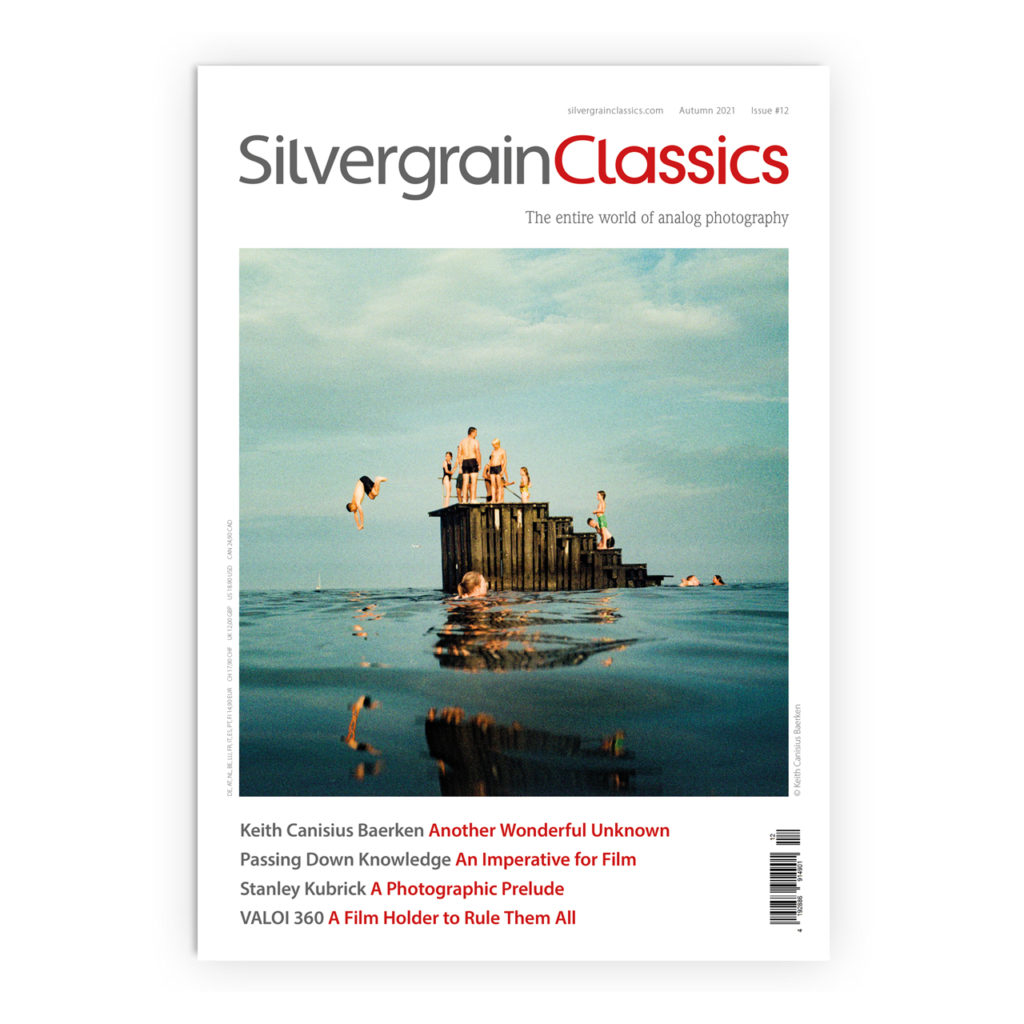The Arriflex 35 BL camera – a technical overview
The Arriflex 35BL 35mm movie camera was released in 1972. Until then movie cameras were either small and noisy or huge and quiet.
By Marwan el Mozayen
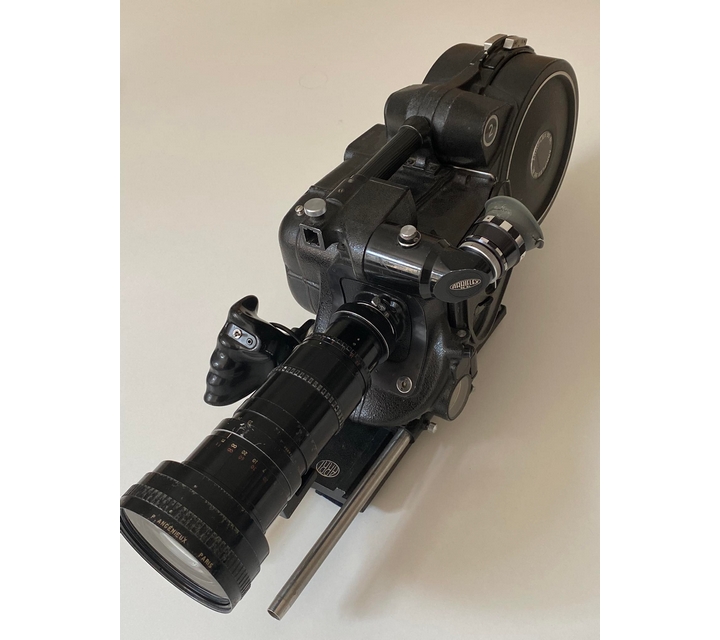
The Arriflex 35 BL camera
35mm movie cameras were either small and noisy (like the Arri 35II or the Cameflex) or huge and quiet (like the Mitchell BNC) right up until the 1970s. This changed In 1972 when Arri released the 35BL. The 35BL remained in Arri’s line-up for 17 years. The final version of the camera was the 35BL4S which was introduced in 1989. Production of the 35BL series ceased in 1990.
The Arri 35BL was first shown at Photokina 1970 between the 3rd and 11th of October. The prototype was designed to test customer reaction to the camera.
Like all Arris, the 35BL was built to last. By 1990 more than 1700 cameras of the 35 BL series had been manufactured. These cameras are engineering masterpieces. Each 35BL consists of about 1800 parts and assembly took 300 manhours of work by 18 employees.
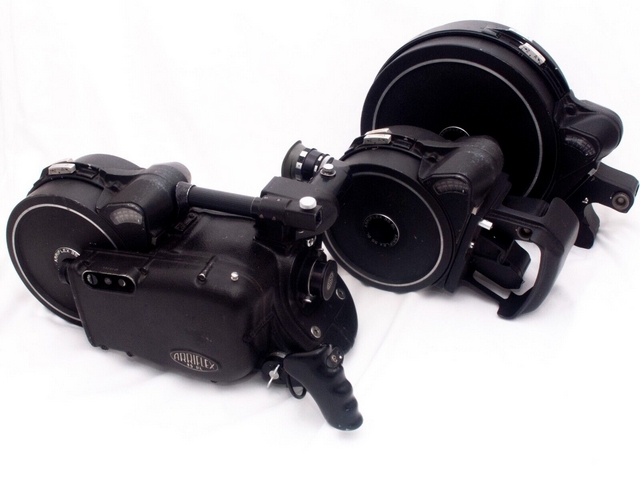
Looking at the camera from above, the left side gently tapers towards the film cassette. The eyepiece is also angled by 20°. This design facilitates viewfinder access. As a result, the eyepiece only has to protrude 5 cm above the camera body. The eyepiece magnifies the ground glass image by a factor of 6.5 and can be tilted up vertically and downwards by 120°. The image position is always maintained when the viewfinder is swiveled and there is no need for tiresome readjustment.
On the right side of the camera, at the level of the mirror/aperture axis, a Hirth serration is provided to enable the handgrip angle to be changed. The handgrip itself has an angled intermediate piece that allows the handle to the housing location to be changed by twisting it.
On the left side of the camera, the speedometer unit is shaped with the camera door hinges and can be used as a second handle. This helps if you want to swing down with the camera in shoulder mode. Then you can completely support the weight of the camera with your left hand, and downward vertical pans are possible to 90°.
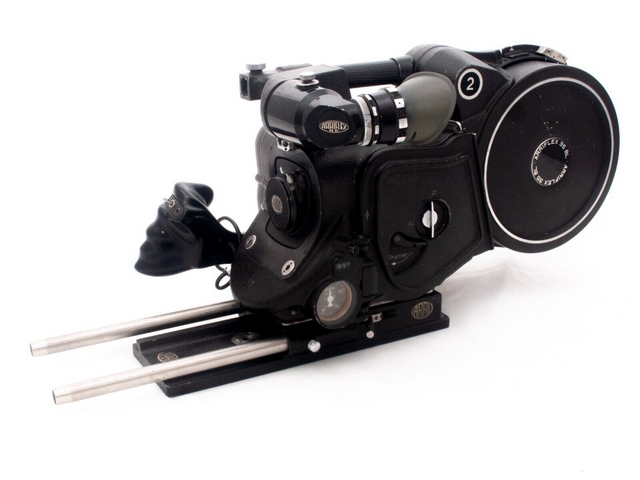
The film runs from a curved film guide under the camera gate. Two axes of claw movement are provided by the transport claw and registration pin. Axis 1 provides the lifting movement of the claw while axis 2 controls the dipping in and out of the claw into the perforation holes. Axis 1 simultaneously moves the Registration Pin into the perforation when the transport claw is moved up outside the perforation by the same axis movement during the exposure phase. Transport and registration pins on both sides are provided for accurate frame positioning. The claw has a double tip to fit in adjacent perforation holes. The claw is made of hard fabric to reduce mass forces and suppress vibrations. The entire film transport unit is extremely compact and is combined into a single block and is mounted on a sliding carriage to reduce the noise transfer to the camera body.
To load film, the entire film transport mechanism is pushed back after releasing a locking lever. In doing so, a spring pushes an adjustment pin eight perforation holes below the gate into the film path. This adjustment pin helps to accurately insert and centre the film during cassette changes and prevents the loops above and below the gate from slipping. When the transport mechanism is pushed forward again after film insertion, the register pin disappears from the film path and the claws hold the film in place. The sliding transport block makes changing film extremely fast and easy. This was an innovative feature on the BL35 and was subsequently implemented by other manufacturers in most later cameras.
The cassettes
Coaxial cassettes already existed when the 35BL was first introduced. This cassette design was already employed on the Eclair NPR as well as on the Bolex 16 Pro. Coaxial cassettes are extremely compact and reduce the dimensions of the camera, but the film material has to be diverted from one roll to the other, which increases the mechanical transport and increases the chance of damage to the film. The designers of the Arriflex 35 BL both reduced the cassette size and achieved a new standard in terms of structure-borne sound insulation too.
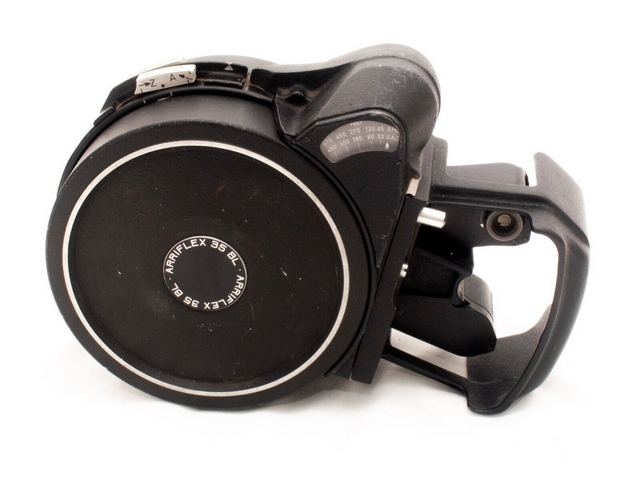
An Arriflex 35 BL cassette
Camera electronics
The right side of the 35 BL camera houses the disc motor and electronics. These can be accessed through a removable side cover. The electronic control consists of 5 circuit boards, two of which are stored directly with the motor under a cover. Board 3 is the quartz control, Board 4 is the pilot control and Board 5 is the acoustic synchronous control with flashing unit. The electronics are connected to the corresponding interfaces by two cable harnesses. The input and output connectors are located on the right housing extension on the back. A 4-pin XLR socket is provided for the power supply with 1= ground and 4=+12V. A 10-pin Fisher socket is provided for either manual control or remote control.
At the very top of the connector panel is a 6-pin socket with a screwed-on jumper plug. If the plug is removed, a special control set with three batteries can be connected here and enables frame rates beyond 50fps up to 100fps. For these high speeds, the motor must be supplied with a voltage of up to 36V. In case of failure of the electronics, the camera can also be operated with 12V alone via this socket. The motor speed is then adjusted with a variable resistor according to the tachometer but is not synchronous. A flashing light between the connection sockets signals the camera to run.
A 5-pin DIN connector can be used to connect a pilot tone cable, which activates the start timing on startup and sends a control pulse for the 1000kHz to the connected recording device. For synchronization control, a red signal light is activated in the viewfinder and the camera emits a short beep when starting to film. The volume of this sound can be adjusted on the left side of the upper housing cover.
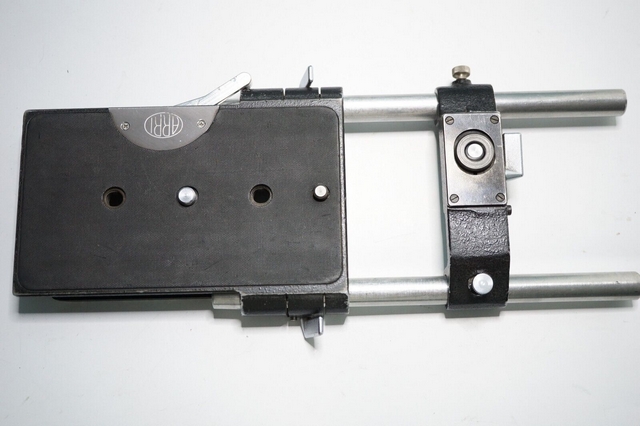
The Arriflex 35 BL lens support
The primary development goal for the 35 BL project was a noise-minimized camera. The Arri designers copied the design principles of the 16BL. All noise-generating parts were strictly separated from the camera body. The lens mount, image window, film transport mechanism, motor and film roll carrier together form a camera skeleton that is isolated from the camera body by elastic bearings and thus cannot transmit structure-borne noise to the outside of the camera.
The lens had to be firmly attached to the image gate and the camera skeleton for a stable flange focal distance with tolerances in the 1/100mm range. As the lens transmits the working noise of the film transport to the outside a lens blimp became necessary. (this was already the case with the Arriflex 16 BL).
Fixed focal lengths were primarily used when shooting on 35mm in the late 1960s. Consequently, lens changes were frequent. Arri’s technicians came up with a special feature to speed up this process. The blimp is inserted at the bottom of the camera front with two pins into corresponding fitting holes, flanged on and automatically snaps into place at the top. A simple push button is used to separate the lens blimp from the camera body. This allows the lenses to be inserted into the already mounted lens blimp from the front.

Update: As a result of this article we were provided with this image of American Cinematographer Garrett Brown on set during filming of The Shining at Borehamwood, England. Photograph courtesy of the Lloyd Family.
Links
You might be interested in Sam Pinto’s article “The Vintage Curves of the Arriflex 35 BL: A connection to Exploitation and Art in Issue 19 of SilvergrainClassics magazine (see https://shop.silvergrainclassics.com/detail/index/sArticle/20276/sCategory/92)
You can find an index to the entire collection of SilvergrainClassics magazines here https://silvergrainclassics.com/en/magazine/index-of-articles/

